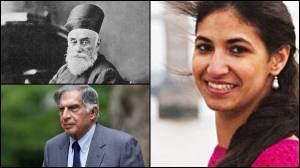Mecca: The Sacred City
Ziauddin Sardar
Bloomsbury
R599
Pp 408
One of the five pillars of Islam is the Hajj—the others being Shahadah (unswerving allegiance to Allah as ‘the one true God’ and Muhammad as his final prophet), Salat (ritual prayer), Zakat (charity) and Sawm (fasting during Ramadan)—the pilgrimage to Mecca, at least once in one’s lifetime, that is obligatory for every (physically and financially) able Muslim. Therefore, Mecca stands prominent in the reckoning of Muslims and, with the spread of Islam across the globe, in that of non-Muslims as well. It is the birthplace of Muhammad and it is on its outskirts, in the caves of Hira, that the holy verses of the Qu-ran, as per Islamic beliefs, were revealed to Muhammad through the archangel Gabriel. In every sense, it is here where Islam was born. But it is also here that Saudi authorities have razed places of worship, the graves and the houses of prominent figures in Islam’s history to widen roads and set up luxury hotels and toilet complexes. It is a city whose present contradicts its past in trying to uphold the latter.
It is in this context that Ziauddin Sardar’s Mecca: The Sacred City becomes an important read, and not just because there are only a handful of books that recount Mecca’s rise to prominence, but also because Sardar, a dedicated Haji (one who has made the pilgrimage) and an official with the Haj Research Committee in Jeddah from 1975 to 1979, writes of Mecca with shades of both an itinerant and a dweller. Mecca is engraved in the Muslim conscious since childhood, when those of the faith—no matter in which part of the world—are taught to pray facing the direction of the Kaaba, which is at the centre of the Holy Mosque in Mecca. The author recollects dips into the memories of his childhood in Pakistan when he first saw the Kaaba in calendar art. Sardar writes how, on peering closely, one could make out that the sea of white swirling around the massive stone draped in black cloth—in Islam, the Kaaba is believed to be the seat of God on earth—was actually male pilgrims, draped in irham (two unstitched pieces of white cloth), in Tawaf, the ritual circumambulation of the Kaaba. Mecca is replete with many such anecdotes and vignettes that Sardar draws from his many pilgrimages to Mecca.




Mecca is also an excellent examination of how the city—specifically, its everyday—has always been at odds with the sacredness associated with it. It is in the recounting of its history that the author traces both his love and eventual disillusionment with the city—to a point that the book itself seems an event of catharsis. Sardar begins with a tale from the Abrahamaic canon, of the desertion by Abraham of his concubine, Hagar, and her son, Ishmael, outside the future city of Mecca and how, after God answered Hagar’s prayers and delivered them from harm, their descendants built the city and peopled the valley. Mecca, Sardar writes, finds mention in the Bible as well, under its earlier name of Baca. It has been a place of pilgrimage from pre-Islamic times, with pagan deities being worshipped. It is only in the 7th century, during the period of Muhammad’s rise, that the idols were swept away and Mecca was created as the holiest of cities in Islam. However, until the 19th century, Shia and Sufi shrines in the city survived, as did the dwellings and tombs of other prominent figures in Islamic history, hinting at the syncretic Islam that prevailed. Then, the puritanical Wahabbis rose in Saudi Arabia, even as the Ottomans were occupied with Napolean’s conquest of Egypt. Mecca’s author sees the Wahabbis, specifically the Saudi royal family, with their oil money and ‘horror of history’, as the chief forces behind the city losing its syncretic character and becoming an Arabian Nights theme park for tourists.
Sardar laments that despite the city being a churn of many cultures and many peoples through the centuries, it never emerged an Alexandria; it never “founded no great library, no university, no hospital”. Mecca, the sacred, was and is, the author believes, just as much profane, with its mercantile and later puritanical character always dimming its hallowed legacy.




















